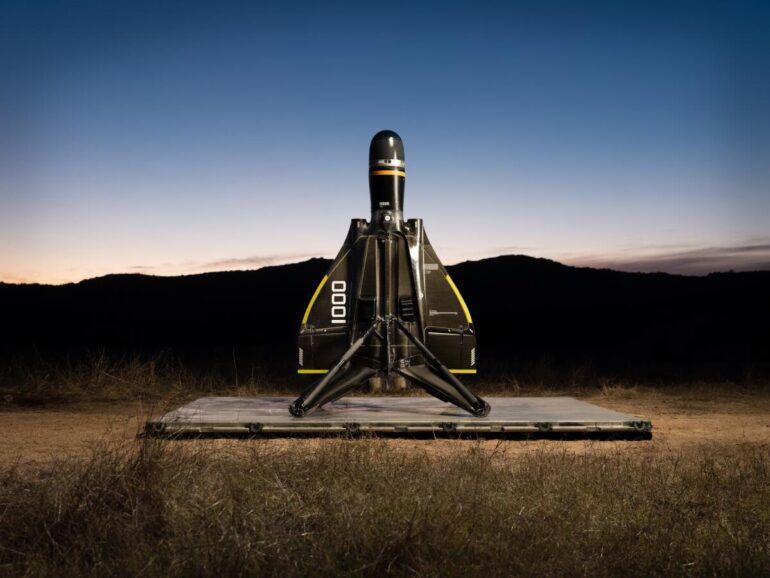TL;DR:
- Anduril’s latest creation, the Roadrunner, is an AI-controlled combat drone designed to counter modern threats.
- Inspired by the rise of cheap, deadly suicide drones in conflict zones like Ukraine.
- Roadrunner is a modular, high-speed jet aircraft with autonomous capabilities and human-controlled decision-making for the use of force.
- It has the potential to intercept enemy drones, including Iranian-made Shahed drones, in Ukraine’s evolving battlefield.
- The use of AI and autonomy in military operations is prompting a reevaluation of global military strategy.
- The Pentagon’s Replicator Initiative aims to rapidly deploy autonomous AI systems to counter China’s military advantage.
- Concerns about destabilization have led to a call for safeguards on military AI use by the US and other nations.
Main AI News:
In 2017, Palmer Luckey envisioned a different breed of defense contractor when he founded Anduril, one that harnessed the spirit of hacker ingenuity and the lightning-fast pace of Silicon Valley. Today, Anduril continues to live up to that promise with its groundbreaking product, the Roadrunner – a jet-powered, AI-controlled combat drone that is poised to reshape modern warfare.
The inspiration behind Roadrunner is rooted in the harsh realities of contemporary conflict zones, most notably Ukraine. In this troubled region, the proliferation of low-cost, agile suicide drones has unleashed a deadly threat that demands innovative solutions. Christian Brose, Chief Strategy Officer at Anduril, articulates the challenge: “The problem we saw emerging was this very low-cost, very high-quantity, increasingly sophisticated and advanced aerial threat.”
The conflict in Ukraine has become synonymous with the relentless arms race between Ukrainian and Russian forces, featuring a proliferation of low-cost drones capable of autonomously surveilling and launching explosive payloads. These drones, including the US-made Switchblades employed by the Ukrainian military, pose a formidable challenge, as they can evade jamming and ground defenses, necessitating the use of far more expensive fighter jets or missiles to neutralize them.
Enter Roadrunner, a modular, twin-jet aircraft, roughly the size of a patio heater, designed for high-speed operations, vertical takeoff and landing, and the capability to return to base when not in active use. Anduril touts its autonomous capabilities, allowing it to proactively identify and assess threats, while its software can be seamlessly upgraded to adapt to evolving challenges. However, one crucial element remains under human control – the decision to employ deadly force. Brose emphasizes, “Our driving belief is that there has to be human agency for identifying and classifying a threat, and there has to be human accountability for any action that gets taken against that threat.”
Samuel Bendett, an expert on military drone utilization at the Center for New American Security, underscores Roadrunner’s potential in Ukraine, particularly in intercepting Iranian-made Shahed drones, a favored tool for Russian forces targeting stationary Ukrainian assets. Bendett notes that both sides in the conflict have integrated drones into a comprehensive “kill chain,” involving consumer drones for target acquisition and short- or long-range suicide drones for attacks. This experimentation in Ukraine is poised to influence US military innovation significantly.
Ukraine’s testing ground extends beyond drones, encompassing the integration of artificial intelligence for targeting and drone control. Reports have suggested the use of AI-driven drones that autonomously target and attack human subjects, although verification remains elusive.
The ongoing conflict in Ukraine, coupled with the growing significance of AI and autonomy in military operations, has compelled nations worldwide to reevaluate their military strategies and investments. The Pentagon, recognizing AI’s transformative potential, has embarked on initiatives to rapidly develop low-cost, AI-powered systems, bridging the gap between traditional defense contractors and nontraditional technology firms.
The Replicator Initiative, launched by the Pentagon, aims to deploy “autonomous systems at the scale of multiple thousands, in multiple domains, within the next 18-to-24 months” to counter the ever-advancing Chinese military. While the program is in its early stages, it underscores the urgency of adopting cutting-edge technologies.
However, as militaries race to embrace AI-driven advancements, concerns arise about potential destabilization. In response, the US and 30 other nations recently declared the need for safeguards on the utilization of military AI. While not calling for a ban on lethal autonomous weapons, the declaration advocates for rules rooted in engineering principles and transparency to mitigate unintended escalations in conflicts.
Conclusion:
Anduril’s Roadrunner represents a significant advancement in AI-powered warfare, addressing the growing threat posed by cheap, agile suicide drones. Its potential application in conflict zones like Ukraine underscores the need for nations to adapt their military strategies and investments to harness cutting-edge technologies. The Pentagon’s Replicator Initiative highlights the urgency of these developments, although concerns about stability and safety have led to calls for responsible AI deployment on the battlefield. This innovation presents opportunities and challenges for the defense market, with the potential to reshape the landscape of modern warfare.

